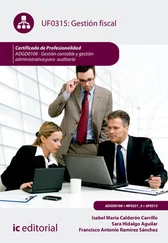In business, the practical importance of a certain degree of transcendent motives in decision-makers is widely accepted. Take the case of a good salesman, for example: when making any sale, he does, of course, seek to earn some money and probably also a new opportunity to learn-to improve his professional skills. However, if he is a good salesman, he will also pay some attention to the real service he is giving to the customer and to the problem he is helping to solve.
It is well known that the worst thing that could happen to a high-caliber sales team is their own loss of confidence in the product they are selling, thinking it unsuitable—that, in their sincere opinion, the customer would be better off buying from the competition. At such times, one usually talks of morale problems in the sales force, lack of motivation and the like. A large part of this frustration, however, is merely the dissatisfaction produced by the lack of achievements at the level of those motives we have called transcendent. After all, the knowledge that what we are doing is useful, that it is something that others can appreciate and, to a certain extent, need, is a far-from-insignificant motivating factor. All these drives have their starting point in transcendent motives.
All this evidence in favor of the existence of these motives in human motivations has occasionally led us to try to simplify the motivation theory, reducing it to one in which we recognize as a starting point three different dimensions of the motivation to perform any action. In such cases, one says that a person's motivation or drive to choose a particular action must necessarily have three components which are determined, respectively, by the action's extrinsic results (extrinsic motivation), internal results (intrinsic motivation) and external results (transcendent motivation).
This simplification is not without danger, however, because it does not clarify a distinction that is absolutely basic: the distinction between motives and the internal drive (motivation) to achieve the motives. Therefore, it does not allow for any analysis of the relationship between motives and motivations, either. A true theory of human motivation cannot confine itself to acknowledging the three types of motives that must necessarily be present in interactions between people. It must also explain how each of these motives influences the formation of the decision-maker’s motivational drive or impulse.
Normally these three types of motives are present in any action. It is normal, for example, for a doctor to care for his patients for the sake of these three types of motives: to receive fees, to develop his professional skill and to cure the disease from which his patient is suffering. Of course, the weight of each of these motives differs for each person: there will always be doctors who think more about fees and others who think more about the patient. The same is true of any professional, as it is true of any action performed by any human being.
A businessman will also be moved to act to earn money, to perform actions which appeal to him and which he feels ready and able to perform—but also to provide a service or to do something good for those who work with him (recall what Chester I. Barnard said about the non-economic motives of businessmen and workers alike).
It is a curious irony of our culture that a good doctor is one who thinks about his patients—even though he also charges fees for treating them—while a person could be accepted as a good businessman when he only seems to think about the money he is going to earn. Of course, there are doctors, teachers and businessmen who seem only to think about the money they are going to earn with what they do, apparently ignoring any other type of motives. In this case, what has happened is that all these people, practicing their various jobs, have been afflicted with the same “disease”: materialism. From the scientific viewpoint, all we can do is predict that if they are not cured, they will become increasingly unsatisfied at the level of nonmaterial needs, and that this will have serious consequences for themselves (and also be bothersome to others).
A person's motivational quality is determined by his sensitivity to be moved by everyone of these types of motives. Even in common language, we usually say that a person is “very human” when we consider him to retain great awareness of what happens to other people and is always prepared to help them (which implies that transcendent motives weigh heavily in his motivation). On the other hand, we call a person very selfish (inhumane) when he only seeks his own satisfaction in his actions without considering the damage or difficulties he may be causing others.
A theory of human motivation that acknowledges that the motivation to perform any action must be explained in the light of the three components we have called extrinsic motives, intrinsic motives and transcendent motives seems to include the most general and obvious aspect of our common experience. Its starting point could not be more simple or realistic. Its consequences, however, are far from obvious, and in many respects require some change in our way of conceiving human organizations and the significance of people's development as such. It was for this reason that we spoke earlier of a paradigm or model (the anthropological or humanistic model) which underlies the conception of any kind of human organization as an institution and not only as a technical system or a social organism. However, as we have also said, a true theory of human motivation must account for how each type of motive we have identified becomes operative in the case of a particular person. We will leave this topic aside for the time being.
The distinction between the types of motives is sufficient to begin developing the most basic elements of a theory that conceives organizations as instruments which help people to satisfy any of these types of motives. This will enable us to reveal certain conditions that must exist if an organization is to be viable, that is, able to find people willing to cooperate in the achievement of the organizational purpose.
The dynamic analysis will show how those conditions evolve due to the learning that results from the operations performed by the organization, but the analysis has to be based on the analysis of the internal processes that take place inside individuals and determine how their motivations are formed. It is the people who interact among themselves who really learn, and it is their learning that brings about that aggregate phenomenon we call organizational learning.
Before addressing the anthropological theory of organizations, we will provide an illustration of the meaning of the concepts we have introduced in terms of our common experience.
There are three types of results that are inseparably linked with an action: extrinsic, internal and external. In so far these results are relevant for the achievement of the decisionmaker's present or future satisfactions we call them motives (extrinsic, intrinsic and transcendent, respectively). Motivation—the impulse that moves him to act—reflects, to a greater or lesser extent, each one of these motives, depending on that person's motivational quality. However, a particular action's real value obviously depends on the value of all of them; it is therefore incorrect to analyze an action's value by looking only at one or two types of motives, since all three are normally present. Thus, a worker may perhaps focus only on what he expects to earn by doing his work (extrinsic motive) and not take into account what he is going to learn from it (intrinsic motive) and how it may affect other people whether he does his work well or not (transcendent motive). In that case, he will only be incorrectly evaluating his action. However, this mistake will not prevent the results from appearing, and he will suffer their consequences a posteriori although he failed to take them into account a priori.
Читать дальше












